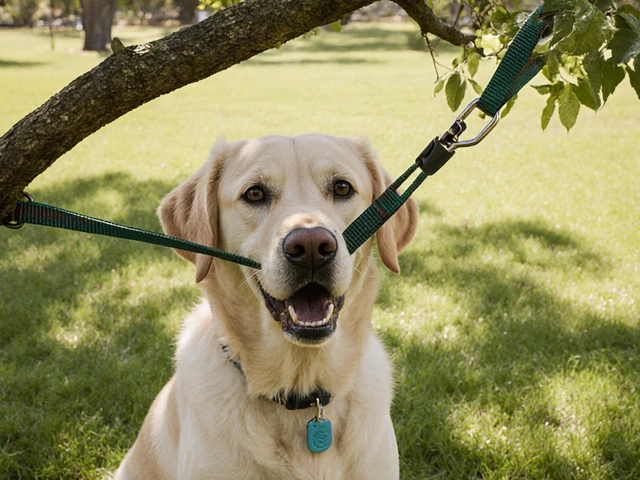A lot of new dog owners get tripped up by one simple question: when should I swap my puppy’s chow for adult dog food? It’s not as cut-and-dried as checking a calendar. Puppies grow at different rates, and what works for a Chihuahua won’t fit a Great Dane. Missing the right window can mess with your dog’s health down the road.
Puppies burn calories fast—they need different nutrients from adult dogs to build muscle, bones, and a strong immune system. Switching to adult food too soon or too late can leave them short on essentials or stuck with extra calories that turn into extra pounds. It all depends on breed size, age, and yes, sometimes just plain personality. Knowing the signs to watch for makes all the difference.
- Recognizing Puppy Growth Stages
- How Age and Breed Size Affect the Switch
- Signs Your Puppy Is Ready for Adult Food
- Making the Transition: Step-by-Step
- Common Mistakes and How to Avoid Them
- Frequently Asked Questions About Puppy Diets
Recognizing Puppy Growth Stages
Puppies don't stay puppies for long, but figuring out when they hit each stage helps you make the right calls about their food. Growth isn’t just about getting taller—it’s a whole process that changes fast in those first months.
The first year is packed with milestones. Here’s a rough breakdown of what to expect:
- Neonatal (0-2 weeks): Eyes and ears are closed, all comfort comes from mom.
- Transitional (2-4 weeks): Eyes open, legs get wobbly but moving!
- Socialization (4-12 weeks): Puppies start playing, learning, and trying real food.
- Juvenile (3-6 months): Growth spurts! Teething happens here, so chewing everything kicks in.
- Adolescence (6-12+ months): Sexual maturity for some breeds. Growth slows, puppies start acting more like adults.
Something a lot of folks don’t realize: breed size drives growth pace. Small breeds can finish growing as early as 9 months, while some giant breeds are still filling out at 18 to 24 months. Switching to puppy food too soon (or too late) throws a wrench in their development.
There’s a huge gap in growth rates between, let’s say, a Yorkie and a Lab. A Yorkshire Terrier might be mostly done growing by 8-9 months. Labrador Retrievers, on the other hand, are still bulking up until about 15 months. Bigger breeds need that extra time on their puppy diet to help their joints and bones develop right.
“Growth rates vary enormously by breed and even within breeds. Feeding protocols should reflect the dog’s real physical maturity, not just their age,” reminds Dr. Jennifer Larsen, veterinary nutritionist at UC Davis.
Check out these general timelines for the most common breed sizes:
| Breed Size | When Puppy Growth Slows | Potential Switch to Adult Food |
|---|---|---|
| Toy (under 10 lbs) | 8-10 months | 9-12 months |
| Small (10-25 lbs) | 9-12 months | 10-12 months |
| Medium (25-50 lbs) | 12-15 months | 12-15 months |
| Large (50-100 lbs) | 15-18 months | 15-18 months |
| Giant (over 100 lbs) | 18-24 months | 18-24 months |
These are just rough estimates, not exact science. Always look for signs in your own puppy: are they still growing, or have things slowed down? If you’re ever unsure, snapping a monthly photo beside something like a shoe or couch leg can make changes easy to spot. Checking in with your vet is a smart move, especially for big breeds.
How Age and Breed Size Affect the Switch
Not all puppies are on the same schedule when it comes to food. The age you swap from puppy to adult formulas depends a lot on their size and even what kind of breed you’ve got at home.
Small-breed pups, like Yorkies or Dachshunds, grow up fast. Most of them are done with the main growth phase by about 9 to 12 months. That means you’ll usually switch them to adult food earlier—think closer to their first birthday.
Medium breeds, such as Beagles or Cocker Spaniels, tend to fall somewhere in the middle. They’re generally ready for adult food between 12 and 14 months.
With large and giant breeds—think Labs, German Shepherds, or Great Danes—it’s a different story. These pups grow for much longer, and swapping foods too soon can mess up bone development. For these guys, you’re often looking at 15 to 18 months or even up to 2 years before making the switch.
If you have a mixed-breed dog, use their estimated adult weight as a guide. Vets often suggest sticking with puppy food a little longer if you’re unsure, just to be safe. Puppy formulas are loaded with the protein and nutrients needed for growing bodies, while puppy food has more calories per bite compared to adult recipes.
Here’s a quick summary:
- Small breeds: Switch at 9–12 months
- Medium breeds: Switch at 12–14 months
- Large/giant breeds: Switch at 15–24 months
The bottom line? Breed and size matter way more than a puppy’s exact age. When in doubt, your vet can weigh in—literally—on when your pup’s ready for the next step.
Signs Your Puppy Is Ready for Adult Food
Puppies don’t come with a blinking “ready to switch” sign, but there are some clear clues that say it’s time to ditch the puppy kibble. The age when you switch varies based on breed and size. Generally, small breed puppies (under 20 pounds as adults) are ready around 9-12 months, while medium breeds (20-50 pounds) switch closer to 12 months. Large and giant breeds (over 50 pounds) may need puppy food until 12-18 months or even longer. Why? Bigger dogs take longer to finish growing, so they need the extra nutrients packed in puppy formulas.
| Breed Size | Typical Switch Age |
|---|---|
| Small (under 20 lbs) | 9-12 months |
| Medium (20-50 lbs) | 12 months |
| Large/Giant (over 50 lbs) | 12-18 months |
Age isn’t the only thing to watch. Here are some cues that your puppy might be ready for puppy food graduation:
- Slowing growth rate: Your pup’s crazy-fast growth levels off. You’ll notice you’re not loosening the collar every other week, and they start to look more filled out and less “leggy.”
- Weight stability: They’re hitting (or close to) their predicted adult weight for their breed and gender. Your vet can give you an estimate if you’re not sure.
- Finishing teething: Most pups are done teething between 6-9 months. Full adult teeth usually mean they’re physically more mature.
- Appetite changes: Puppies often eat less voraciously when they’re done with growth spurts. They may leave food behind or not seem as obsessed with mealtime.
If you’re on the fence, talk to your vet. Some vets might recommend keeping large or giant breeds on puppy chow longer to support healthy joints and bones, especially for breeds prone to hip issues.
Just keep in mind: switching too early means they could miss out on those all-important proteins and fats; too late and they risk packing on extra pounds. There’s no harm in checking the feeding guidelines on your puppy’s brand and using that as reference—most companies know their formulas best.

Making the Transition: Step-by-Step
Once you know your puppy’s ready, a smooth food swap is all about patience. You can’t just switch out the bowl overnight. If you go too fast, you’re almost guaranteed a case of tummy troubles. Dogs’ stomachs are sensitive to abrupt changes, especially in the first year.
Here’s how to make the change to adult dog food without any drama:
- Start Slow: On day one and two, mix about 75% puppy food with 25% adult food at each meal.
- Day three and four, even it out—about 50% puppy food and 50% adult food.
- For day five and six, bump it up to 75% adult food and 25% puppy food.
- By day seven, go full adult food. But keep an eye out for any changes in stool, appetite, or behavior. If your dog gets the runs, slow down and hold at the current mix for a few days before trying to increase again.
This method usually works great for most puppies, but every dog is different. If your pup refuses to eat or seems off, double-check with your vet. Sometimes food brands don’t agree with specific breeds or sensitive dogs.
For an even smoother change, stick to feeding your dog at the same times each day. Routine helps the digestive system adjust.
Think about keeping treats and table scraps to a minimum during this time. Too many new foods at once can confuse things for your dog and for you, especially if loose stools pop up.
Check this quick table for a practical view of what to watch out for during the switch:
| Phase | Mix Ratio (Puppy:Adult) | What to Watch For |
|---|---|---|
| Days 1-2 | 75:25 | Accepts food, normal poop |
| Days 3-4 | 50:50 | Minor stomach issues possible |
| Days 5-6 | 25:75 | Should be adjusting fine |
| Day 7+ | 0:100 | Watch for ongoing digestive problems |
The main thing is to give your dog’s system time to get used to the new stuff. If things don’t look right, or your dog skips meals, don’t be afraid to ask your vet for advice. Getting the puppy food switch right is way more important than rushing it.
Common Mistakes and How to Avoid Them
When it’s time to switch your puppy to adult food, a few common missteps can trip up even experienced owners. Let’s run through the slipups I see all the time—and, better yet, how to dodge them.
- Switching too early or too late: Puppies have specific nutritional needs until they finish growing. Jump the gun and you risk stunting growth or missing key nutrients. Wait too long and you may notice your dog packing on weight, since puppy food is dense in calories.
- Sudden switch: Flipping from puppy food to adult chow overnight can give your dog a case of the runs—or an upset stomach that sets you both back. Professional vets always recommend a slow transition.
- Ignoring portion sizes: Even after switching, some owners keep feeding puppy-sized servings. This is a quick way to end up with a pudgy adult. Check the feeding chart on your dog food bag and adjust as your dog’s metabolism changes.
- Not considering breed size: Don’t forget—large breeds need puppy food longer than small breeds. Think somewhere between 12 to 18 months for big dogs, but as little as 8 to 10 months for the little guys.
- Skipping the vet check: Your vet can spot weight issues or growth spurts you might miss. Skipping this step sometimes means missing key timing cues.
Here’s a quick cheat sheet for the most common mistakes, plus the fix:
| Mistake | How to Avoid |
|---|---|
| Moving to adult food too soon | Wait until your puppy is near full size; ask your vet for breed-specific guidance. |
| Sudden diet change | Transition slowly over 7–10 days by mixing adult and puppy food. |
| Wrong portion sizes after switching | Follow package directions and monitor body condition. Adjust as needed. |
| Forgetting breed differences | Research your puppy’s breed or mix to know the right timeline. |
| Not consulting the vet | Schedule a checkup around the time you plan to switch foods. |
One last thing—don’t get fooled by marketing. Fancy packaging doesn’t always mean the food is right for your dog’s stage. Always check for phrases like "complete and balanced" and pick brands backed by solid nutrition research. You want your pup’s diet to grow up with them—and switching to puppy food made for adults at the right time makes all the difference.
Frequently Asked Questions About Puppy Diets
When it comes to puppy food and switching to adult diets, there are a ton of questions that owners run into. Let’s tackle the ones that show up the most in real life at the vet’s office and dog parks.
- How do I know my puppy is ready for adult food? Usually, it's about size and age. Small dogs might be ready at 9-12 months, medium breeds somewhere around a year, and big breeds may wait till 18-24 months. Look for when your dog stops growing fast, and ask your vet if you’re not sure.
- Can I mix puppy and adult food when switching? Yes! Mixing helps your dog adjust and avoids tummy troubles. Start with a quarter adult food and three-quarters puppy food, gradually upping the adult portion over about a week.
- What happens if I switch too soon? Puppies need extra calories, calcium, and protein for development. Switching too early can lead to thin bodies or weak bones.
- How often should I feed my puppy? Young puppies need to eat three or four times a day. Once they hit 6 months, most can move to two meals daily.
- Is it okay to give my puppy adult treats or human food? Stick to puppy treats that match their nutrition needs. Many human foods are a no-go (like chocolate, grapes, and onions).
“A puppy’s nutritional needs are very different from an adult dog’s, especially during their rapid growth periods. Choosing the right diet gives them the best chance at long-term health.”
– Dr. Rachel Barrett, DVM
If you’re unsure about when to switch, here’s a quick comparison for when most breeds make the change:
| Breed Size | Typical Age to Switch |
|---|---|
| Small | 9-12 months |
| Medium | 12-15 months |
| Large | 15-24 months |
One practical tip: always check for feeding guidelines on reputable puppy food labels. Those recommendations get you in the right ballpark, but your own dog's appetite and body condition will say the most. When in doubt, your vet can give the final say-so. Good nutrition in the puppy phase has a pay-off—healthy joints, strong immune systems, and energy to burn well into adulthood.





